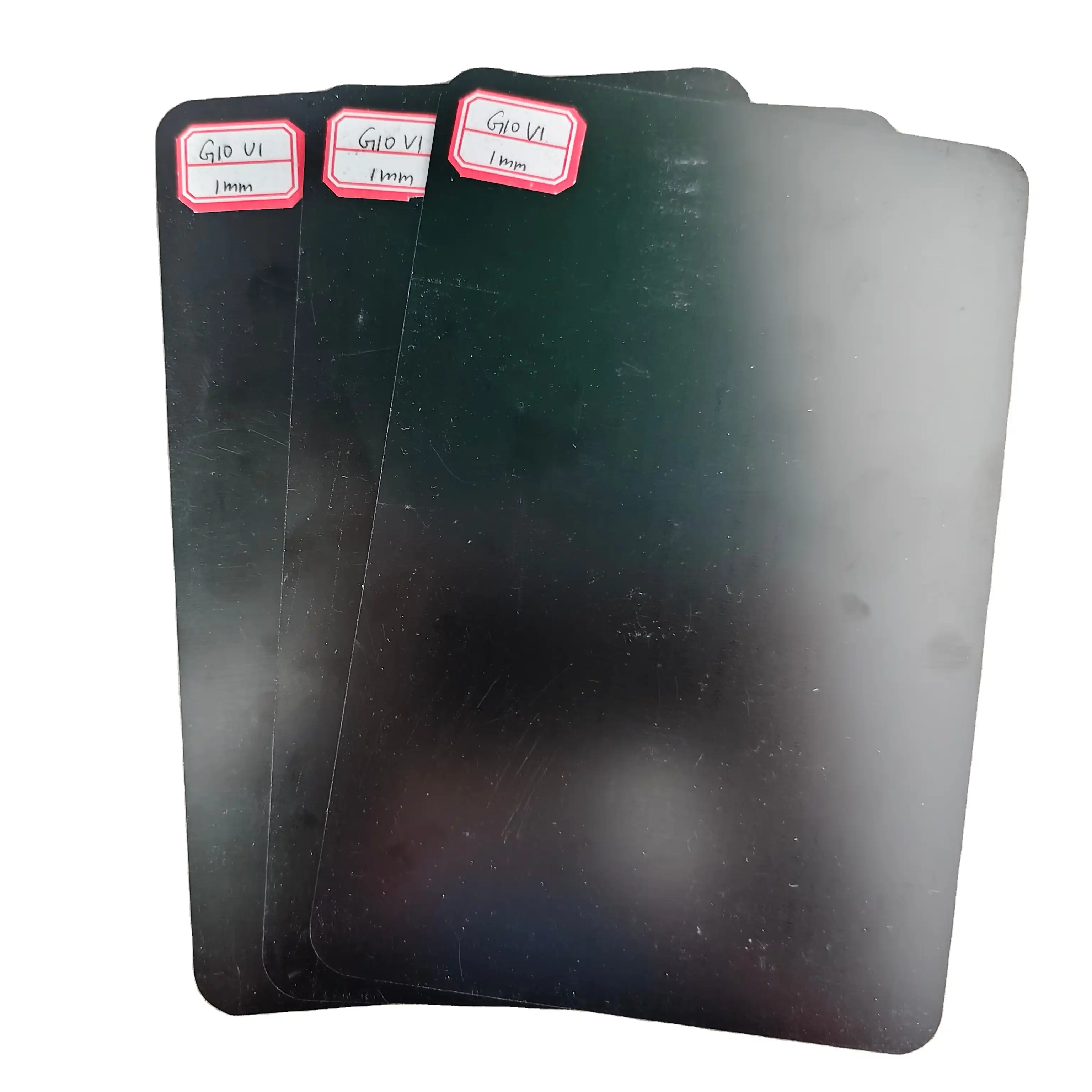Understanding G10 Sheet Composition and Properties
Chemical Makeup of G10 Sheets
G10 sheets are composed of a unique blend of materials that contribute to their exceptional properties. The base material consists of woven glass fabric, which provides strength and rigidity. This fabric is impregnated with an epoxy resin system, creating a robust composite. The epoxy resin used in G10 sheets is typically a high-performance thermoset polymer, known for its excellent adhesion and chemical resistance. The combination of glass fibers and epoxy resin results in a material with superior mechanical and electrical properties.
Physical Characteristics of Genuine G10
Authentic G10 sheets exhibit distinct physical characteristics that set them apart from imitations. One of the most noticeable features is their uniform color, typically a light green or natural off-white hue. The surface of genuine G10 sheets is smooth and free from irregularities, reflecting the high-quality manufacturing process. When handling G10 sheets, you'll notice their substantial weight and density, indicative of the tightly woven glass fibers and fully cured epoxy resin. The edges of G10 sheets should be clean-cut and resist fraying, showcasing the material's structural integrity.
Mechanical and Electrical Properties
G10 sheets are renowned for their exceptional mechanical and electrical properties. In terms of mechanical strength, genuine G10 boasts high tensile and flexural strength, making it resistant to deformation under stress. The material also exhibits excellent dimensional stability, maintaining its shape and size even under varying environmental conditions. Electrically, G10 is prized for its superior insulation properties. It has a high dielectric strength, meaning it can withstand strong electric fields without breaking down. The material also maintains its electrical properties across a wide range of temperatures and humidity levels, making it versatile for various applications.
Testing Methods for G10 Sheet Authenticity
Visual Inspection Techniques
Visual inspection is the first line of defense in identifying genuine G10 sheets. Start by examining the sheet's color uniformity. Authentic G10 typically displays a consistent hue throughout, free from discoloration or patches. Scrutinize the surface texture; genuine G10 should have a smooth, even finish without any visible imperfections or irregularities. Pay close attention to the edges of the sheet. They should be clean-cut and resist fraying, indicating the material's high-quality construction. Under magnification, you may observe the fine weave pattern of the glass fibers, a hallmark of genuine G10. Additionally, check for any manufacturer markings or lot numbers, which are often present on authentic materials.
Physical Testing Procedures
Physical testing provides concrete data to verify G10 sheet authenticity. One crucial test is the water absorption test. Cut a small sample of the material and weigh it precisely. Submerge the sample in water for 24 hours, then reweigh it. Genuine G10 should exhibit minimal water absorption, typically less than 0.1% by weight. Another physical test involves measuring the material's hardness using a Shore D durometer. Authentic G10 typically registers between 80 to 95 on this scale. You can also perform a flame test; genuine G10 should be self-extinguishing and produce minimal smoke when exposed to flame. Lastly, measure the specific gravity of the material. Genuine G10 should fall within the range of 1.7 to 1.9.
Electrical Property Verification
Verifying the electrical properties of G10 sheets is crucial in confirming their authenticity. Use a high-quality multimeter to measure the material's electrical resistance. Genuine G10 should exhibit extremely high resistance, typically in the range of 10^12 to 10^14 ohms. Test the dielectric strength by applying an increasing voltage across a thin sample of the material until breakdown occurs. Authentic G10 should withstand voltages of 500 to 700 volts per mil (0.001 inch) of thickness. Another important test is the arc resistance test, where G10 should resist electrical arcing for 120 to 180 seconds. Additionally, measure the dissipation factor at various frequencies; genuine G10 should maintain a low dissipation factor across a wide frequency range, indicating its excellent insulating properties.
Sourcing and Verifying G10 Sheet Suppliers
Evaluating Manufacturer Credentials
When sourcing G10 sheets, thoroughly evaluating manufacturer credentials is paramount. Start by researching the company's history and reputation in the industry. Look for manufacturers with a long-standing presence and a track record of producing high-quality materials. Verify their certifications, such as ISO 9001 for quality management systems or industry-specific certifications relevant to G10 production. Examine their manufacturing processes and quality control measures. Reputable manufacturers often provide detailed information about their production techniques and quality assurance protocols. Additionally, inquire about their raw material sourcing practices to ensure they use high-grade components in their G10 sheets.
Analyzing Material Certifications and Documentation
Authentic G10 sheets should come with comprehensive material certifications and documentation. Request and carefully review the material data sheet (MDS) or technical data sheet (TDS) for the G10 product. This document should detail the material's composition, physical properties, electrical characteristics, and performance data. Look for test results from recognized testing laboratories that verify the material's compliance with industry standards. Pay particular attention to certifications such as UL 94 for flammability rating and IEC 60893 for electrical insulation materials. Authentic suppliers should readily provide lot-specific test reports and certificates of conformance upon request. These documents offer traceability and assurance of the material's quality and authenticity.
Importance of Sample Testing Before Bulk Orders
Before committing to a bulk order of G10 sheets, it's crucial to conduct thorough sample testing. Request samples from potential suppliers and subject them to a battery of tests to verify their authenticity and quality. Perform visual inspections, physical tests, and electrical property verifications as outlined earlier. Compare the results with the specifications provided in the material data sheet. This process allows you to assess the consistency and reliability of the supplier's products. Additionally, consider fabricating small-scale prototypes or test pieces using the sample material to evaluate its performance in your specific application. Sample testing not only helps in identifying genuine G10 sheets but also ensures that the material meets your project's unique requirements, potentially saving time and resources in the long run.
Conclusion
Identifying genuine G10 sheets is a multifaceted process that requires attention to detail and a comprehensive approach. By understanding the material's composition, conducting thorough visual and physical examinations, and verifying electrical properties, you can confidently distinguish authentic G10 from imitations. Remember to source from reputable manufacturers, analyze material certifications, and always perform sample testing before large purchases. These steps will ensure that you obtain high-quality G10 sheets that meet your project's exacting standards, guaranteeing optimal performance and reliability in your applications.
Contact Us
For more information about our premium G10 sheets and other insulating materials, please don't hesitate to contact us at info@jhd-material.com. Our team of experts is ready to assist you in finding the perfect solution for your needs.






